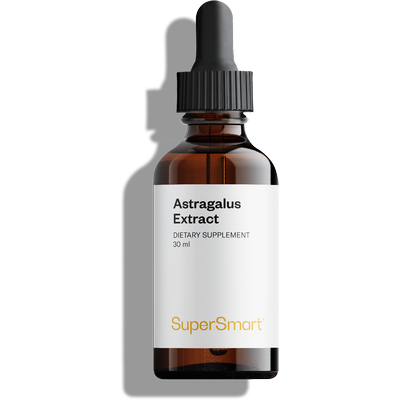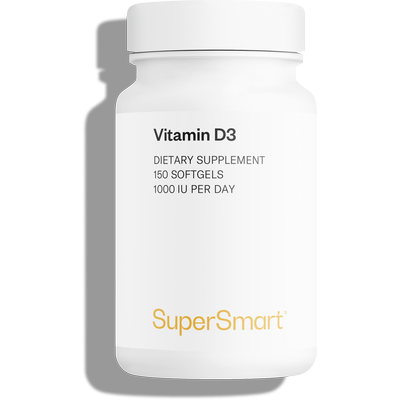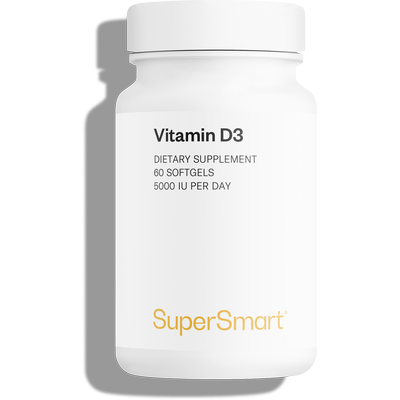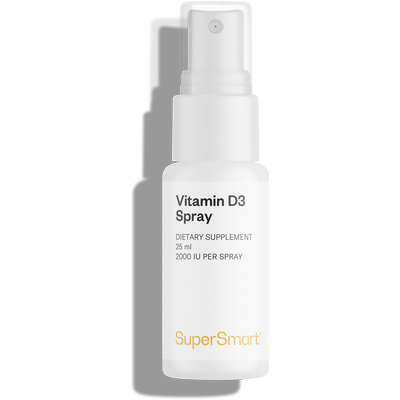07-12-2016
Simple measures to fight winter ailments
 Each year, the arrival of winter brings with it an increased likelihood of falling ill. While certain people are at greater risk, all generations are prone to winter ailments. Depending on the individual, these can vary in form, intensity, development and the area of the body affected. Nonetheless, they are usually infectious in origin, and generally involve the respiratory tract. As they develop, these winter ills can affect several parts of the body, including the nose, throat, ear canal, bronchial tubes and even the digestive system. We therefore need to take measures to help our bodies fight off these pathogens. Fortunately, simple solutions are available to prevent and treat these winter ills.
Each year, the arrival of winter brings with it an increased likelihood of falling ill. While certain people are at greater risk, all generations are prone to winter ailments. Depending on the individual, these can vary in form, intensity, development and the area of the body affected. Nonetheless, they are usually infectious in origin, and generally involve the respiratory tract. As they develop, these winter ills can affect several parts of the body, including the nose, throat, ear canal, bronchial tubes and even the digestive system. We therefore need to take measures to help our bodies fight off these pathogens. Fortunately, simple solutions are available to prevent and treat these winter ills.
Why are we more affected in winter?
With the advent of winter, the body becomes increasingly vulnerable to external aggressors. We see a significant rise in respiratory tract disorders and infectious diseases. Why does this happen? Though the cold weather is often to blame, it is not the only cause. In fact, the picture is similar in all four corners of the earth. Between 1975 and 2006, a study of the French population revealed an increase in illness over the winter period associated with a rise in mortality 1.Similar results have been observed in other European countries that have a more temperate climate such as Portugal2, as well as in countries much further away, such as India3. Winter ailments may therefore be explained by the change in weather and not just the drop in temperature. The world’s scientists are working on this constantly to improve their understanding and find ever more effective solutions.
Change in weather encourages development of pathogens
Fresh studies are carried out each year on new forms of viruses and bacteria in an effort to improve our defences against these winter ailments. Among the viruses of most concern to health authorities is the influenza, or flu, virus. Its aggressive nature and potential for contagion makes it one of the most widely-studied pathogens. In 2013, a study concluded that the flu virus is able to spread in a variety of weather conditions4. In countries with a temperate climate, the flu virus develops in a cold, dry atmosphere, while in tropical countries, it thrives in mild, humid conditions. Thus in temperate climates, it develops in winter specifically, and in tropical climates, during the rainy season. The onset of winter ailments may therefore be linked to seasonal weather changes rather than to particular weather conditions. This can be explained by a number of factors associated with weather changes, such as fewer hours of sunshine, shorter days, disruption to the body clock… These factors recall the causes of seasonal depression, discussed in a recent article in Nutranews. This form of depression may affect the body’s defences in particular and facilitate the development of winter ailments.
Are these ailments linked to a lack of sunshine?
Indeed they are – the key role played by the sun is indisputable. A lack of natural light can significantly affect not only our mood but our defences too. This is primarily because of a drop in levels of vitamin D, an essential element produced by the body when the skin is exposed to the sun’s rays. Known for its ability to promote calcium absorption in the intestines, vitamin D also plays an important role in the immune response, stimulating the body’s own defence mechanisms. A study published in 2016 confirmed that there was a greater risk of catching flu when there is a lack of natural sunlight, and more generally, in cases of confinement 5. This latter aspect is particularly germane in winter when people are often less motivated to go out. There are other factors associated with confinement indoors such as poor ventilation of work and living spaces which encourages the development of bacteria and viruses as well as increasing the risk of passing them on. All these changes in everyday living conditions expose the body to numerous external aggressors and increase the risk of becoming infected by a virus or bacteria. To fight these pathogens, it would therefore seem sensible to help the body boost its own immune defences.
How should you respond to winter aggressions?
Fatigue, headache, sore throat, a runny or blocked-up nose, sneezing … these typical winter symptoms can really have an impact on our daily lives. Fortunately, simple solutions are available to help prevent or treat them. And it would be a shame not to take advantage of these solutions, particularly as diseases that are more difficult to treat can develop when these more minor problems are poorly controlled. This is particularly so for the development of inflammatory diseases such as a sore throat, pharyngitis, rhino-pharyngitis, laryngitis, bronchitis, otitis, sinusitis or even gastroenteritis. To prevent or fight these winter diseases, a few simple steps should be taken to safeguard your health.Adopt good practices to prevent infection and contagion
Adopting certain practices can help prevent the development and transmission of winter infections. In France, the French National Institute for Prevention and Health Education (INPES) has therefore issued a series of recommendations for children and adults. For example, we are strongly advised to wash our hands regularly, limit direct contact, avoid crowded places, cover our mouth when coughing or sneezing, wear a mask, and regularly ventilate living spaces6. Though such recommendations are both easy to put into practice and effective at preventing infection, they are nonetheless often ignored. As mentioned, it is also important not to stay cooped up at home. Research has indeed confirmed the benefits of taking exercise and getting out in the fresh air7.
Preventive supplementation with vitamin D
While we cannot replace the sun, we can counter the harmful effects of insufficient sunshine. For example, we can deal with a lack of vitamin D by supplementing our diet. Vitamin D is found in certain foods, but can also be ingested in the form of nutritional supplements. Formulated to provide optimal doses of this invaluable vitamin, these dietary supplements are key allies in the fight against winter ailments. They are available as capsules, as well as in liquid form in measured dose sprays.
Natural extracts to combat winter ills
Certain medicinal plants, which have been used for hundreds of years, have demonstrated beneficial effects in combatting winter ailments. Scientific studies have identified active principles the effects of which help boost the body’s defences. This is the case, for example, with the root of the plant Astragalus membranaceus which has been proven to stimulate the immune system. A recent study, published in the journal Evidence-Based Complementary and Alternative Medicine, confirmed the therapeutic properties of this natural extract which is much-prized in Chinese traditional medicine8. The study identified an association between administration of a natural extract of Astragalus membranaceus and an improvement in immune function. Eight to twelve hours after administration, researchers observed a significant increase in monocytes, neutrophils and lymphocytes. These cells are key elements of the immune system when it comes to fighting external aggressors. The use of Astragalus root was also found to produce an increase in blood platelets, just four hours after administration. Researchers also noted a rise in circulating cytokines – molecules often compared to hormones and involved in immune function
Marine compounds with beneficial properties for fighting winter ailments
While many studies are conducted on the therapeutic potential of plant extracts, some researchers are focusing on the beneficial properties of marine compounds. These offer significant potential for boosting the immune system and fighting winter ailments. Over the past few years, the specialist journal Marine Drugs has documented a number of marine compounds with anti-bacterial, anti-viral, anti-fungal, anti-inflammatory, anti-protozoal and even anti-tuberculosis properties9. Such properties make these compounds a valuable aid to many of the body’s mechanisms including its immune defences. This is the case, for example, with several compounds extracted from the brown seaweed Ecklonia cava. Highly-valued in Japan and Korea, this algae contains, in particular, phlorotannins, molecules known both for their antioxidant potency and their anti-bacterial and anti-viral properties 10,11. Capitalising on the benefits of this ‘miracle’ seaweed, extraction and delivery methods have enabled an extract of ’Ecklonia cava
Our bodies are more vulnerable in winter and need a helping hand to fight the many pathogens circulating in the air around us. To provide that support, we need to adopt a few simple measures to prevent contagion and boost our immune defences.
References :
1. Daniel Rousseau, « Surmortalité des étés caniculaires et surmortalité hivernale en France », Climatologie, vol. 3, 2006, p.43-54
2. Antunes L, Silva SP, Marques J, Nunes B, Antunes S, « The effect of extreme cold temperatures on the risk of death in the two major Portuguese cities », Int J Biometeorol. 2016 Jun 18.
3. Panda S, Mohakud NK, Suar M, Kumar S, « Etiology, seasonality, and clinical characteristics of respiratory viruses in children with respiratory tract infections in Eastern India (Bhubaneswar, Odisha) », J Med Virol. 2016 Aug 10.
4. James D. Tamerius, Jeffrey Shaman, Wladmir J. Alonso, Kimberly Bloom-Feshbach, Christopher K. Uejio, Andrew Comrie, and Cécile Viboud, « Environmental Predictors of Seasonal Influenza Epidemics across Temperate and Tropical Climates », PLoS Pathog. 2013 Mar, 9(3) : e1003194.
5. Acharya B, Thapa K, « Indoor Staying During Winter Season Makes People More Susceptible to Flu », J Nepal Health Res Counc. 2016 Jan, 14(32) : 69-70.
6. Inpes, « Virus de l’hiver : des mains régulièrement lavées, un hiver en bonne santé », Dossier de presse, Décembre 2013.
7. Pinchasov BB, Shurgaja AM, et al., « Mood and energy regulation in seasonal and non-seasonal depression before and after midday treatment with physical exercise or bright light », Psychiatry Res. 2000 Apr 24, 94(1) : 29-42.
8. Denzler K, Moore J, Harrington H, Morrill K, Huynh T, Jacobs B, Waters R, Langland J, « Characterization of the Physiological Response following In Vivo Administration of Astragalus membranaceus », Evid Based Complement Alternat Med. 2016, 2016 : 6861078.
9. Alejandro M. S. Mayer, Abimael D. Rodríguez, Orazio Taglialatela-Scafati, and Nobuhiro Fusetani, « Marine Pharmacology in 2009–2011: Marine Compounds with Antibacterial, Antidiabetic, Antifungal, Anti-Inflammatory, Antiprotozoal, Antituberculosis, and Antiviral Activities; Affecting the Immune and Nervous Systems, and other Miscellaneous Mechanisms of Action, Mar Drugs », 2013 Jul, 11(7) : 2510–2573.
10. Shilpi Gupta, Nissreen Abu-Ghannam, « Bioactive potential and possible health effects of edible brown seaweeds, Trends in Food Science & Technology », Volume 22, Issue 6, June 2011, Pages 315–326.
11. Li Y, Qian ZJ, Ryu B, Lee SH, Kim MM, Kim SK, « Chemical components and its antioxidant properties in vitro: an edible marine brown alga, Ecklonia cava », Bioorg Med Chem. 2009 Mar 1, 17(5) : 1963-73.
Order the nutrients mentioned in this article

Astragalus Extract is an extract of Astragalus membranaceus, traditionally used as a tonic to fight weakness and infection
www.supersmart.com
Healthy individuals now require a minimum dose of 1000 IU a day.
www.supersmart.comFurther reading
24-06-2019
Better known as PEA, palmitoylethanolamide is a natural and powerful active principle discovered in 1957. Since then, it has consistently been the subject of new...
Read more04-09-2019
Did you know that of all your organs, it is the lungs which are the first to age? Like the skin, they are exposed to...
Read more03-01-2018
Every year, the same people seem to miraculously escape the epidemics of flu or gastroenteritis. The fact is though, luck has nothing to do with...
Read more© 1997-2025 Fondation pour le Libre Choix
All rights reserved
All rights reserved
Free
Thank you for visiting our site. Before you go
REGISTER WITHClub SuperSmart
And take advantage
of exclusive benefits:
of exclusive benefits:
- Free: our weekly science-based newsletter "Nutranews"
- Special offers for club members only



















